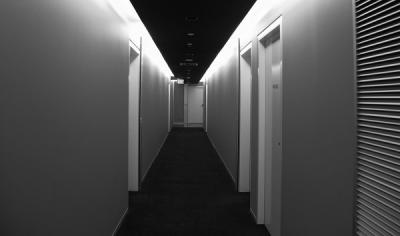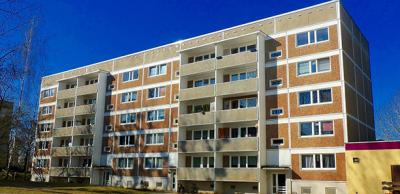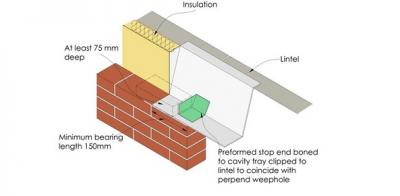The dos and don'ts of mains powered smoke alarms and battery alarms
Most properties in the UK have battery-operated smoke alarms, but mains powered smoke alarms interlinked between floors are the most reliable method of giving early warning in case of fire and must now be installed in all new homes.
Mains-wired smoke alarms are also required in certain types of alteration and extension work. Mount them in the circulation space at every floor level:
- In loft conversions
- When adding new habitable rooms (bedrooms, kitchens, living or dining rooms) above ground floor level
- When adding a new habitable room at ground floor level that doesn’t have its own exit leading outdoors
Installing new interlinked smoke alarms can be disruptive, so think about the need for detection before you start work. Radio-linked alarms are acceptable; as long as the manufacturer can guarantee the battery back-up will last for 72 hours.
Smoke alarm DOs:
- Ensure there's at least one alarm on every storey of the dwelling
- Ensure there's an alarm within 3m of the door to every bedroom.
- Provide a heat detector to the kitchen if it's open plan to the escape route
- Mount them 300mm away from walls and light fittings
- Ensure the electrical installation of the units meets Part P requirements in England and Wales
- Provide instructions to the end user
Smoke alarm DON'Ts:
- Install them above staircases where testing and maintenance is dangerous
- Site them in places where they can become very hot, cold, or subject to a lot of moisture or fumes (bathrooms, kitchens, garages - use a heat detector if need be)
Remember, there are additional requirements for large houses of two or more storeys where one of those storeys exceeds 200m2, so bear this in mind when working on footballers' mansions! If in any doubt, contact your local authority building control team to discuss.
Further information about fire safety
- View a diagram showing where to place smoke alarms and heat alarms
- Download the SCA Guidance on Smoke Control to Common Escape Routes in Apartment Buildings (Flats and Maisonettes)
- Read the Building Regulations Part B Approved Document on Fire Safety for dwellings in England and Wales
Also view: How to protect residents from carbon monoxide poisoning
Please Note: Every care was taken to ensure the information was correct at the time of publication. Any written guidance provided does not replace the user’s professional judgement. It is the responsibility of the dutyholder or person carrying out the work to ensure compliance with relevant building regulations or applicable technical standards.
This article was updated on August 2024
Sign up to the building bulletin newsletter
Over 48,000 construction professionals have already signed up for the LABC Building Bulletin.
Join them and receive useful tips, practical technical information and industry news by email once every 6 weeks.
Subscribe to the Building Bulletin





Comments
Mains powered smoke alarms
Submitted 4 years 8 months ago
My house (build in 1945) needs to be re-wirings, electrician saying must have supply mains power 230Vac to smoke alarms. Is this legislation?
Please specify publication
John
Reply
Submitted 4 years 8 months ago
Thanks for getting in touch.
Technically, unless there are other works taking place, it's unlikely that there would be a building regulation requirement for the installation of mains powered smoke alarms. However, when rewiring domestic premises it is strongly recommended that mains powered smoke alarms are installed.
Kind regards
Barry, LABC
Do my alarms need to be linked?
Submitted 4 years 7 months ago
battery replacement
Submitted 4 years 6 months ago
Reply
Submitted 4 years 6 months ago
If you can't see any information on the alarm itself, have a look online for the manufacturer's instructions.
Many thanks
Julie, LABC
Mains interlinked wired and mesh network fault with fireangel
Submitted 4 years 5 months ago
Reply
Submitted 4 years 4 months ago
Sorry but you will need to engage a qualified electrician to test your system for you and issue a BS 7671 certificate for the new circuit in compliance with the 18th edition Electrical Regulations. The interlinked detection should still trigger on alarm independently to the app to your phone.
Kind regards
David, LABC
Enlarging existing habitable rooms
Submitted 4 years 2 months ago
Building control
Submitted 4 years 2 months ago
I have been told if I put mains wired fire alarms in every habitable room fire doors are not required. Can you please confirm if this is correct?
Best regards,
Nadeem
(No subject)
Submitted 3 years 2 months ago
Ychwanegu sylw newydd